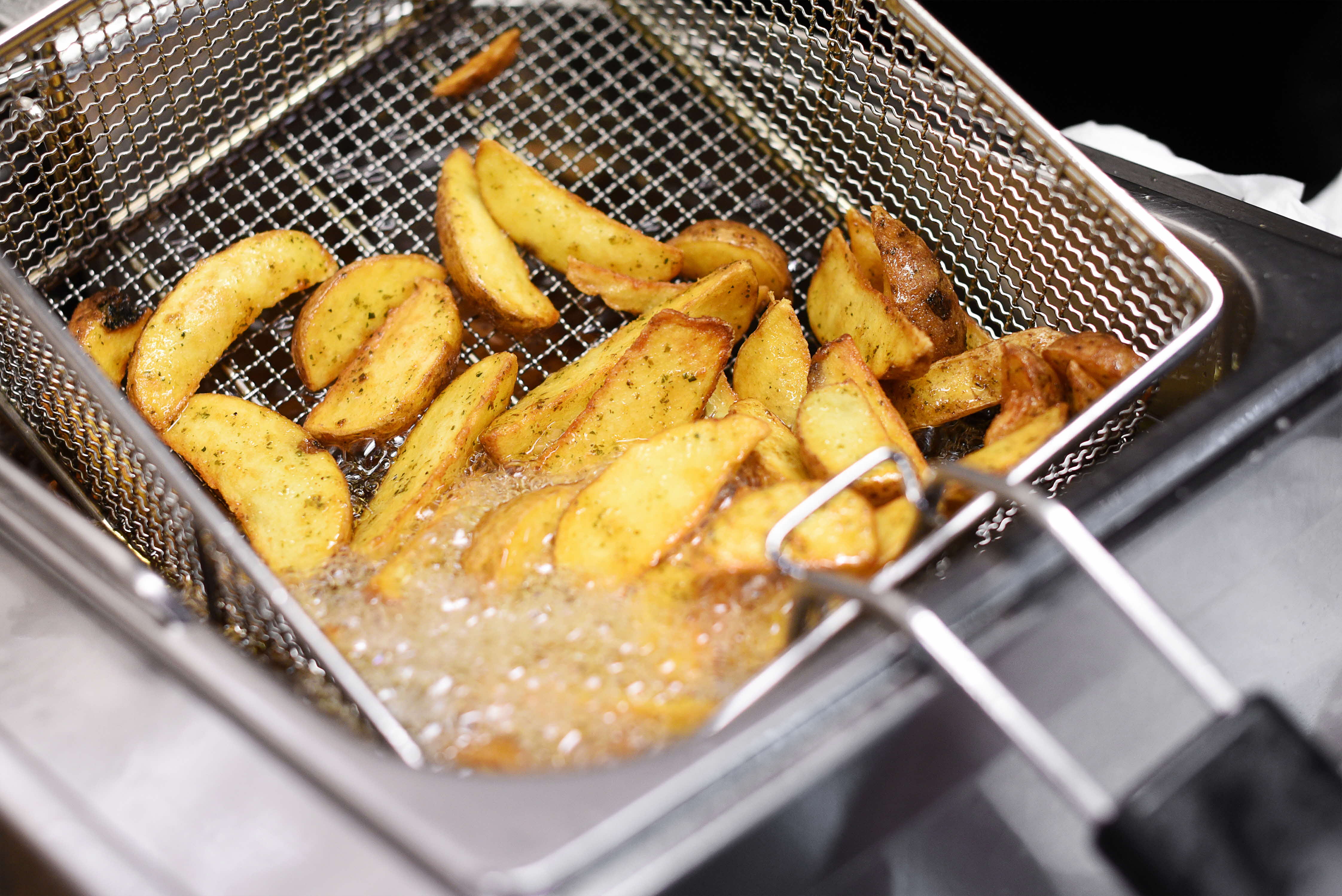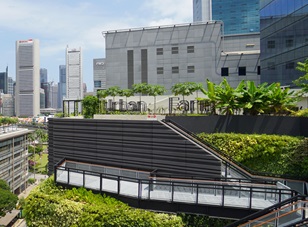Summary:
|
Celebrating its 20th anniversary, the MAC has played a pivotal role in the aquaculture industry. It has developed indoor hatchery production technology, conducted selective breeding programmes, and supported local fish farms – all crucial for Singapore’s “30 by 30” vision, with seafood as one of the key food types for local production as it is a good source of protein which can be produced efficiently and sustainably.
The MAC 20th Anniversary Symposium, held on 14 August 2023, marked the Centre’s two decades of excellence. Organised by the Singapore Food Agency (SFA), the symposium highlighted the MAC's role as a R&D hub in tropical marine aquaculture. The event fostered collaboration between professionals and experts from both industry and academia, providing a platform to explore research opportunities and discuss the future of aquaculture.
The session started with an opening address by Dr Koh Poh Koon, Senior Minister of State for Sustainability and the Environment, who highlighted some of the MAC’s key achievements over the last 20 years. He also called for collective action by the government and industry to build a thriving and sustainable aquaculture future.

Dr Koh Poh Koon, Senior Minister of State for Sustainability and the Environment made the opening address at the MAC 20th Anniversary Symposium.
This was followed by presentations from four esteemed international and local aquaculture experts - Dr Albert Tacon, Professor Patrick Sorgeloos, Mr Ir Piet Verstraete and Dr Richard Le Boucher - who shed light on global trends, challenges and the future of aquaculture in Singapore and the region. There was also a panel discussion where attendees engaged in robust discussions on challenges faced by the industry, such as the high dependency on wild caught fish for fish feed and the importance of biosecurity in reducing disease outbreaks.

International and local aquaculture scientists/experts delivered a series of presentations and engaged in a panel discussion with the attendees.

The MAC 20th Anniversary Symposium provided a good platform for collaboration and discussions between industry partners and academia on the future of aquaculture.
Stewarding a More Productive and Sustainable Aquaculture Future
Today we face challenges like climate change and geopolitical shifts, underlining the importance of local food production for our food security. To transform the aquaculture sector towards greater productivity and sustainability, the Singapore Aquaculture Plan (SAP) was introduced by SFA in 2022. At the core of SAP lies the AquaPolis, an innovative aquaculture R&D programme supporting Singapore’s ambitions to become a leading research and innovation hub for sustainable tropical aquaculture. As the research cornerstone of AquaPolis, the MAC’s state of the art facilities will also be enhanced to propel its R&D capabilities, and help farms embrace technology and sustainable practices.

Looking ahead, the MAC aims to become a global centre for collaboration, where the exchange of knowledge, best practices, and innovative ideas come together to shape the future of tropical aquaculture. At the heart of these interconnected elements are the individuals whose commitment have propelled the MAC forward for two decades.
“My motivation at the MAC stems from continuous learning, which I deeply value as it drives my growth in the industry. It's gratifying to see farms benefit from the findings and protocols resulting from the projects I’ve been involved in. I take great pride in knowing that my efforts enhance farm efficiency and efficacy. When I receive words of appreciation, it further fuels my dedication to this vital work,” shares Mr Quek Wei Li, an officer in SFA’s Urban Food Solutions Division, with 14 years of service at the MAC.

Mr Quek Wei Li from SFA’s Urban Food Solutions Division provides insight into his continued commitment to the MAC, even after 14 years.
Mr Xu Qunying, also from the Urban Food Solutions Division draws inspiration from other means to spur him on. He reflects on his involvement in the development of an AI-based rotifer counter in collaboration with GovTech: “Our challenge was to digitise a 40-minute manual counting process with no existing digital solution. The team eventually managed to create an AI counter that reduced the task to just one minute, surpassing our expectations.”
The journey, initially daunting, taught him that perseverance, together with resilience, can lead to unexpected breakthroughs. “When we witnessed the result, I felt a mix of relief and exhilaration. Knowing our system could enhance hatchery production and contribute to Singapore's “30 by 30” vision was incredibly rewarding,” says Mr Xu.

Mr Xu Qunying, also from SFA’s Urban Food Solutions Division, shares about a noteworthy project he was actively engaged in.
Despite varied sources of professional progress, both Mr Quek and Mr Xu derive fulfilment from the knowledge that their work plays a critical role in advancing local food production.
While the MAC, its initiatives and its team are a testament to Singapore's commitment to ensuring our food security, achieving this mission requires a joint effort. Through collective action by the government, industry and even consumers, we can forge ahead, making strides toward a more sustainable and thriving aquaculture industry, and bolster Singapore’s food security.
Tracing the MAC’s milestones from inception to innovation We illuminate the MAC’s invaluable contributions to the development of our local aquaculture industry over the last 20 years: Laying the groundwork for aquaculture 1960s – 1990s In 1960, the Primary Production Department (PPD) was established to oversee farming in Singapore. Its Aquaculture Unit, later renamed the Marine Aquaculture Section in the 1980s, was essential in driving the industry's growth. Focused on strengthening local supply and reducing reliance on fish imports, early R&D efforts included breeding and production techniques for various fish species, shrimps and mussels. Additionally, PPD worked on nutrition and disease management methods. Notably, they developed spawning techniques for different fish species, enabling the large-scale captive production of fish like seabass, snapper, threadfin, and grouper. A successful pilot of an intense shrimp raceway farm system paved the way for Singapore's first advanced prawn farm. The introduction of new fish species, such as the four-finger threadfin, further contributed to the industry's development. Shaping the landscape (2000-2018) 2000 – 2003 PPD underwent a restructuring and became the Agri-Food & Veterinary Authority of Singapore (AVA) in 2000. This transformation was closely followed by the founding of the MAC on St John Island in 2003. The unique choice of location was due to the island’s offshore positioning, offering clean seawater perfectly suited for large-scale fish farming.
The MAC was established to enhance Singapore's expertise in aquaculture genetics, nutrition and health. At that time, it boasted state-of-the-art aquaculture facilities that were pioneering in the region. During its early stages, the MAC developed protocols for the large-scale cultivation of microalgae and rotifer. Concurrently, efforts to develop brood stocks of fish species like Asian seabass, pompano and cobia in tanks were also initiated.
2004 – 2007
Shortly after, the MAC established a protocol for transporting seabass fry over 36 hours, facilitating the distribution of a substantial quantity of fish fry to the region. The MAC also successfully spawned and nurtured cobia in tank systems, reducing the reliance on cobia imports and enhancing the local fish supply. 2008 - 2010 A new large-scale fish nursery facility was later commissioned at Pulau Semakau in collaboration with Barramundi Asia Pte Ltd. The site commenced full-scale operations with 300,000 "super seabass" fry supplied by the MAC.
The MAC also conducted efficacy trials of a bivalent vaccine on Asian seabass fingerlings, yielding significant improvements in fingerling survival rates and growth performance. 2011–2014
To counter "Big Belly Disease”, a novel hatchery condition, aquaculture specialists at the MAC engineered a Low-Salinity Recirculating Aquaculture System (RAS) prototype, potentially increasing Asian seabass fingerling survival rates by tenfold.
Later, through another joint project with Temasek Life Sciences Laboratory, the MAC successfully enhanced the growth rates of Asian seabass and saline-tolerant Mozambique tilapia by 30 and 15 per cent respectively.
2015 - 2018
A colour-coded alert system was introduced by MAC to aid in monitoring harmful algae blooms in the Johor Straits. Coastal farmers were also trained in contingency planning to enhance resilience against harmful blooms and oil spills.
The centre also designed a custom fish vaccination syringe needle guard that protects the user from accidental self-injection when conducting vaccinations.
Later in 2018, the MAC executed a comprehensive study of the ecological and environmental attributes of the Johor Straits, to determine the quantity of fish that could be sustainably farmed in the Straits.
Advancing aquaculture excellence (2019-2022) 2019 The SFA was formed, consolidating all food-related functions previously under AVA, the Health Sciences Authority and the National Environment Agency.
In the same year, SFA supported the completion of Singapore’s first Closed Containment System prototypes, protecting stocks from adverse water conditions such as harmful algae blooms. 2020 – 2022 The MAC developed artificial intelligence (AI) and image recognition technology in partnership with GovTech to automate the counting of rotifers, complementing its ongoing efforts in recirculating rotifer culture systems. This significantly reduced the time needed from 40 minutes to 1 minute. The centre also set in place an Aquaculture Nutrition Facility consisting of a R&D feed mill and a 72x 1000L experimental tank system, adding the development of sustainable and novel aquafeeds to its research capabilities.
|

















.tmb-308_227.jpg?Culture=en)
